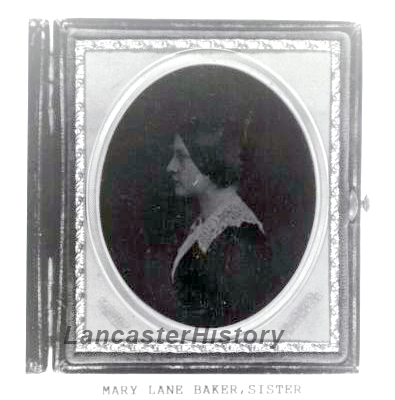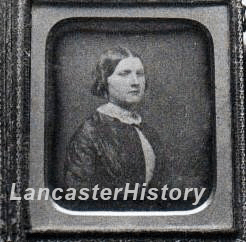Consumption: The Worldwide Epidemic’s Impact on the Buchanan Family
Written by Patrick Clarke, Director of President James Buchanan’s Wheatland
Edited by Emily Miller
Before You Read: This article is written to educate about the health struggles of the Buchanan family and the prevalence and impact of tuberculous on communities. Therefore, there are discussions of themes relating to disease (epidemics), death, and dying that may be uncomfortable to some readers. Thank you!
Preface: There are many Buchanan relatives with similar names. We recommend utilizing this helpful Buchanan Family Tree [PDF, 55kb] we’ve put together to have a visual aid about the people we’re about to discuss.
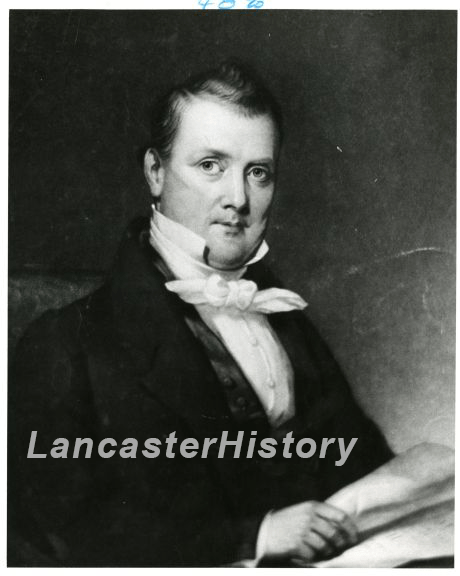
Future 15th President James Buchanan was born in Pennsylvania on April 23, 1791. He was the second born and oldest surviving child to James and Elizabeth S. Buchanan, Sr. James (Jr.) had six sisters and four brothers, but of these brothers, only Edward married and raised a family. Four of the sisters, all younger than James (Jr.), married and had children. The first four children were born at their father’s trading post business in Cove Gap, Pennsylvania. In 1796, the family moved to the borough of Mercersburg, where the other seven children were born.
Like many Pennsylvanians during the early 19th century, the Buchanans were exposed to consumption, an airborne disease we now know as tuberculosis (also known as TB). A common misconception during the 19th century was that consumption was hereditary, which led to extremely high infection rates that had reached epidemic levels. The disease caused rapid weight loss that many described as “wasting away.” These horrific symptoms led to the name “consumption,” as the disease was seen to be consuming the individual.
The family’s first encounter with consumption occurred in 1820 when the husbands of Maria and Sarah Buchanan died from the disease. Samuel Johnston, Maria’s spouse, died without a will. All of his real estate and assets went to pay his bills, which left Maria and her infant son, James, with little to no resources. Maria’s older sister, Jane B. Lane, took them in at her home. Sarah’s experience was different. Her husband, James Huston, left a sizeable estate for her and their infant daughter, Elizabeth.
In early June 1821, James Buchanan Sr. died in a terrible carriage accident. The loss of Mr. Buchanan had profound implications on everyone in the family, but more so for his first-born son, James. At the time, James Buchanan (Jr.) had a successful law practice in Lancaster and had just been elected to serve in the United States House of Representatives. When James (Jr.) learned of his father’s death he immediately traveled home to Mercersburg. Upon his arrival, he discovered that his father died without a will.
“James spent the rest of the summer working out details of the settlement of the complicated estate in a manner that would enable his mother to get along with as little worry as possible.”[1]
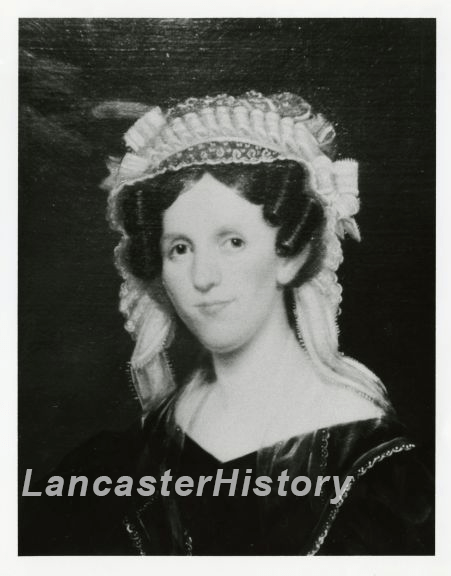
As James organized his father’s estate, he secured funds to ensure that Harriet Buchanan, his youngest sister, could complete her studies at Mrs. Carson’s School for Ladies in Chambersburg. He established an account for his sister, Jane B. Lane, as well as for his brothers, William, George, and Edward, so they could attend college. For his widowed sisters, Sarah and Maria, James established accounts specifically for their infant children. James Buchanan suddenly realized he was the family patriarch.
During her stay with Jane B. Lane’s family, Maria’s infant son died from consumption and she was devastated. As the New Year 1822 began, Maria reconnected with an old family friend, Dr. Jesse Magaw. Maria was nine years younger than Jesse, and they first met when Jesse was her brother, James’ teacher at the academy in Mercersburg. James mentioned this in his autobiography:
“After having received a tolerably good English education, I studied the Latin and Greek languages at a school in Mercersburg. This was first kept by the Rev. James R. Sharon, then a student of divinity with the Rev. Dr. John King, and afterwards by a Mr. McConnell and Dr. Jesse Magaw, then a student of medicine and afterwards my brother-in-law.”[2]
By the Christmas holidays, Maria announced her engagement to Dr. Jesse Magaw. They married on January 30, 1823. By May, the proud father-to-be announced that Maria was expecting. Their joy was quickly dashed when Jesse died abruptly on September 30, 1823, from consumption, leaving the family, again, without a will in place. Dr. Magaw’s assets, like Samuel Johnston’s, were consumed by his liabilities. Maria was 27 years old and a widow for the second time in her life. Her daughter was born on February 25, 1824, and she named her Jessie E.H. Magaw.
Meanwhile, Sarah and her daughter, Elizabeth Huston were settled and content at their Montgomery Township farm. Only five miles from Mercersburg, they frequently visited Jane and Elliott Lane at their home. After celebrating Elizabeth’s fifth birthday on August 5, 1824, Sarah developed a persistent and aggressive cough and she died a few months later from consumption on January 27, 1825. Elliott T. Lane served as the executor of Sarah’s will, and Elizabeth was taken in by her Aunt Jane until Jane’s brother, James Buchanan, could leave Washington. James Buchanan was now a congressman and had obligations in Washington until early March. Upon James’ arrival in Franklin County, he traveled to Chambersburg where he filed for a certificate to become Elizabeth’s legal guardian.
Elizabeth Huston became James’ first ward in 1825; however, he knew that his lifestyle would not be suitable for her. Nevertheless, he brought Elizabeth to Lancaster and sent a letter to his friend, Thomas Kittera, in Philadelphia. Kittera agreed to take in Elizabeth before Buchanan had to return to Washington. Thomas Kittera lived with his widowed mother, his sister Ann, and two nieces who, like Elizabeth, were orphans. James Buchanan felt his niece would thrive being around children her own age.
“After placing her with the Kitteras for nine years, he provided for her schooling and took care of her in his Lancaster home until her marriage.”[3]
Maria continued to have financial difficulties as she struggled to raise her daughter Jessie. In 1825, she met Dr. Charles M. Yates of Meadville, Pennsylvania and they began to court. In February 1826, Maria announced her engagement, and the happy couple married at the Meadville Presbyterian Church on November 7, 1826. James Buchanan liked Charles. Charles had a keen interest in politics, a topic James lived and excelled at daily. But, like his new wife, Charles did not have much money, and when he did have any, he gambled most of it away.
The joy of Maria’s November wedding was suddenly dampened when Mrs. Buchanan, Sr. notified the rest of the family that her son–their brother–William Speer Buchanan, died of consumption. He died on December 18, 1826.
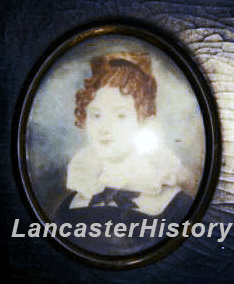
Over the next eight years, Maria gave birth to four more children, and tension grew between Maria and Charles about daughter Jessie Magaw’s presence as well as Jessie’s poor health. Uncle James Buchanan was quite fond of Jessie, partly because her father was his former teacher. James wrote to her frequently.
During the first four years of the 1830s, James Buchanan concluded a decade of service in Congress and served a three-year mission as the United States Minister Plenipotentiary to Russia under President Andrew Jackson. During his time abroad, his sister, Harriet, married the Reverend Robert Henry; his brother, Edward, was ordained a minister in the Episcopal Church and married Ann Eliza Foster; and his brother, George Washington Buchanan, died in September 1832 followed soon by their mother, Elizabeth Speer Buchanan, on May 14, 1833.
In the summer of 1832, Edward Y. Buchanan sent a letter to his brother in Russia. James replied by September with fatherly advice.
“I cannot say I am much pleased with your intention to settle at Meadville. It is a remote place & does not present an extensive theater either for usefulness or improvement. Besides I felt a strong desire as you know that you should not immediately take charge of a congregation. Still I shall never interfere with your determinations. You are now a man and I trust & believe a Christian & will be governed by your duty as well as your interest.”[4]
Harriet Buchanan Henry settled in with her husband at the Presbyterian Parsonage in Greensburg, Pennsylvania. On March 1, 1833, she gave birth to their son and named him after her father, James Buchanan Henry. Three years later on April 11, 1836, Harriet gave birth to her daughter, Jane. Unknowingly and unfortunately, Harriet and the Reverend Henry were unaware that they carried the consumption virus which would later infect and kill their eight-month-old daughter on December 11, 1836. Two years later, after suffering from a lingering cough, Reverend Robert Henry died on November 1, 1838, and was laid to rest next to his daughter. He died without a will. On November 4, Harriet received a letter from James.
“My dear Sis, I received the melancholy information of Mr. Henry’s death this afternoon from Mr. Drum.”
Buchanan added,
“You are welcome, most welcome to a home with me where I think you may promote my happiness as well as your own. Jane [Lane] is yet here; but will return home the first good day with James [James B. Lane]. She says she would be delighted if you would spend the winter with her. She is in her usual health and sends her kindest love.”[5]
Harriet and her 4-year-old son (also named James) arrived in Mercersburg that winter to stay with Jane B. Lane’s family.
Intermission: There are many Buchanan relatives and many with similar names! We want to offer this Buchanan Family Tree [PDF, 55kb] again as a helpful visual aid for all the people we’re discussing.
James also wrote to Maria and Charles Yates in November 1838. He wanted to send Jessie Magaw “to the very best country female school I can find.” He added that she would “make a fine woman if she lives,”[6] referring to the persistent threat of consumption. James wanted Jessie enrolled at a school in Mount Joy, Pennsylvania where consumption did not appear to be as widespread. However, Jessie was fond of her “Aunt Harriet [Henry], so James decided “it might be best if all stayed at the family homestead at Mercersburg, and she attended school there.”[7]
Buchanan’s three remaining sisters—Harriet B. Henry, Jane B. Lane, and Maria B. Yates–and his two nieces—Jessie Magaw and Elizabeth Huston—continued to suffer from consumption. Harriet Henry was also financially distressed and at the family’s December 1838 gathering in Mercersburg, she insisted they sell their late father’s Dunwoodie Farm. Edward disagreed and insisted that they could receive more money from the sale of the farm if they waited. James decided to purchase the farm himself and told Edward…
“Nothing but family pride induced me to purchase your farm. I could not bear to see the last vestige of father’s property in Franklin County go into the hands of strangers.”[8]
James then divided the sale price equally among his brothers and sisters.
Jane’s health began to deteriorate quickly that December. While she had her brother, James, in Mercersburg, she requested he draw up a legal agreement to create a Trust for the care and education of her children and to have James serve as the trustee. Buchanan and his brother-in-law, Elliot T. Lane, signed the agreement in early January 1839. One month later, Jane B. Lane died at home.
At the beginning of autumn 1839, James Buchanan began to plan for a more permanent home for Elizabeth S. Huston. Since her graduation in 1837, Elizabeth lived at her uncle’s Lancaster home on East King Street. James wrote to Harriet Henry to see if Elliot T. Lane might take Elizabeth in as a boarder.
“The time is now at hand when Elisabeth must be fixed for the winter. But to come to the point. If the circumstances of Mr. Lane’s family permit and if you can take her until the next spring, she may go. Of course, she must pay her boarding.”[9]
Elizabeth was thrilled to be in Mercersburg. She loved her Aunt Harriet and her Uncle Elliott and was content to entertain her young cousins, James B. Henry, Mary Lane, and Harriet Lane, who would later serve as President Buchanan’s First Lady.
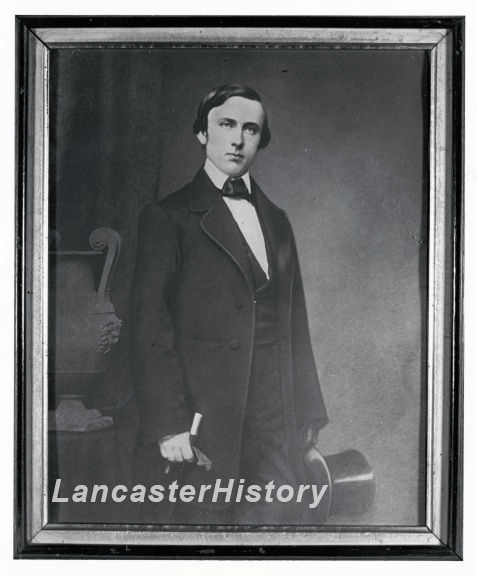
Unfortunately, 1840 started on a melancholy note. James Buchanan received word from Elliott T. Lane that Harriet Henry had died on January 27, 1840. James agreed to serve as Harriet’s executor, so he made his way to Mercersburg to settle Harriet’s estate. Waiting for him was his 6-year-old nephew, James B. Henry, who was now an orphan.
Following his seventh birthday on March 1, James Henry became his uncle’s second ward. Later in his life, James B. Henry wrote a biographical sketch of his life with his Uncle James Buchanan.
“In consequence of the death, in 1840, of my surviving parent, the youngest sister of Mr. Buchanan, I became a member of his immediate family. He was executor of my mother’s will, and by it he was appointed my guardian. I was then seven years old.”[10]
That summer, Elizabeth Huston traveled to Meadville to spend several months with her Aunt Maria and Uncle Charles Yates. In late November, James Buchanan received news from Mercersburg that Elliott T. Lane died suddenly of apoplexy, a term used then to describe sudden death by internal bleeding. Modern medicine today would attribute the sudden death to a heart attack or stroke. At the time of his death, Mary Lane, age 14, and Harriet Lane, age 10, were still living at home. Soon after their father’s funeral, Mary and Harriet Lane were moved to Paradise, Pennsylvania by their Uncle Edward Buchanan who was appointed Harriet Lane’s legal guardian because she was under the age of fourteen. Soon after the Christmas holidays, Harriet Lane asked to become a member of her Uncle James Buchanan’s household. James Buchanan agreed and Harriet became his third ward.
During her stay at the Yates family home, Elizabeth Huston met Charles W. Kelso, an attorney in Meadville. The young couple courted and wed on April 26, 1842. They moved to Erie, Pennsylvania where Elizabeth soon died from consumption on April 24, 1843, two days before their first anniversary.
Meanwhile, Jessie Magaw had also fallen in love with a young man from New York City, Charles E. Weaver. They married on March 18, 1845, and James Buchanan, who was then the United States Secretary of State, gave Charles a job as a clerk in the State Department.
James Buchanan made educational arrangements for his new wards, James B. Henry and Harriet Lane. He enrolled James Henry at Mr. Beck’s School for Boys in Lititz, Pennsylvania. Harriet Lane attended her lessons at the home of two unmarried and elderly sisters, the Misses Crawfords, and, when Buchanan was in Washington, Harriet stayed at their home as a boarder.
James Henry attended two other boarding schools before enrolling at the College of New Jersey, located in Princeton New Jersey where he graduated with his B.A. in 1853. He read law and passed the Philadelphia Bar in 1855. Following the November 1856 presidential election, James Henry answered his Uncle James’ letter to serve as private secretary to the President of the United States. James Henry held that post until he married in 1859.
Harriet Lane was also sent to different schools. Following her year of tutelage at the Misses Crawfords’ residence, Harriet joined her older sister, Mary, at the School for Girls and Young Ladies on Lawrence Street in Charlestown, Virginia. In July 1846, Buchanan wrote a letter to inform Harriet she would be attending a new school in the fall.
“I think of all places for the nunnery at Georgetown would be the best.”[11]
Harriet graduated at the age of 18 from the Georgetown Catholic School of the Visitation. By 1853 her Uncle James was appointed to serve as the United States Minister Plenipotentiary at the Court of St. James in London, England. He invited Harriet to join him in England to serve the United States Legation as the hostess at the United States Minister’s office. The experience in London, England provided Harriet with the training she would require in 1857, when her uncle, then the 15th President of the United States, appointed her the hostess at the White House. Harriet remained with her Uncle James as his constant companion until January 11, 1866, when she married Baltimore banker Henry Elliot Johnston.
Consumption proved to be a virus that baffled and troubled 19th-century medical professionals around the world. In its advanced stages, the infected person appeared to many to look as though they were as healthy as could be. For some, the disease would quickly take their life, but for others, it could linger for years.
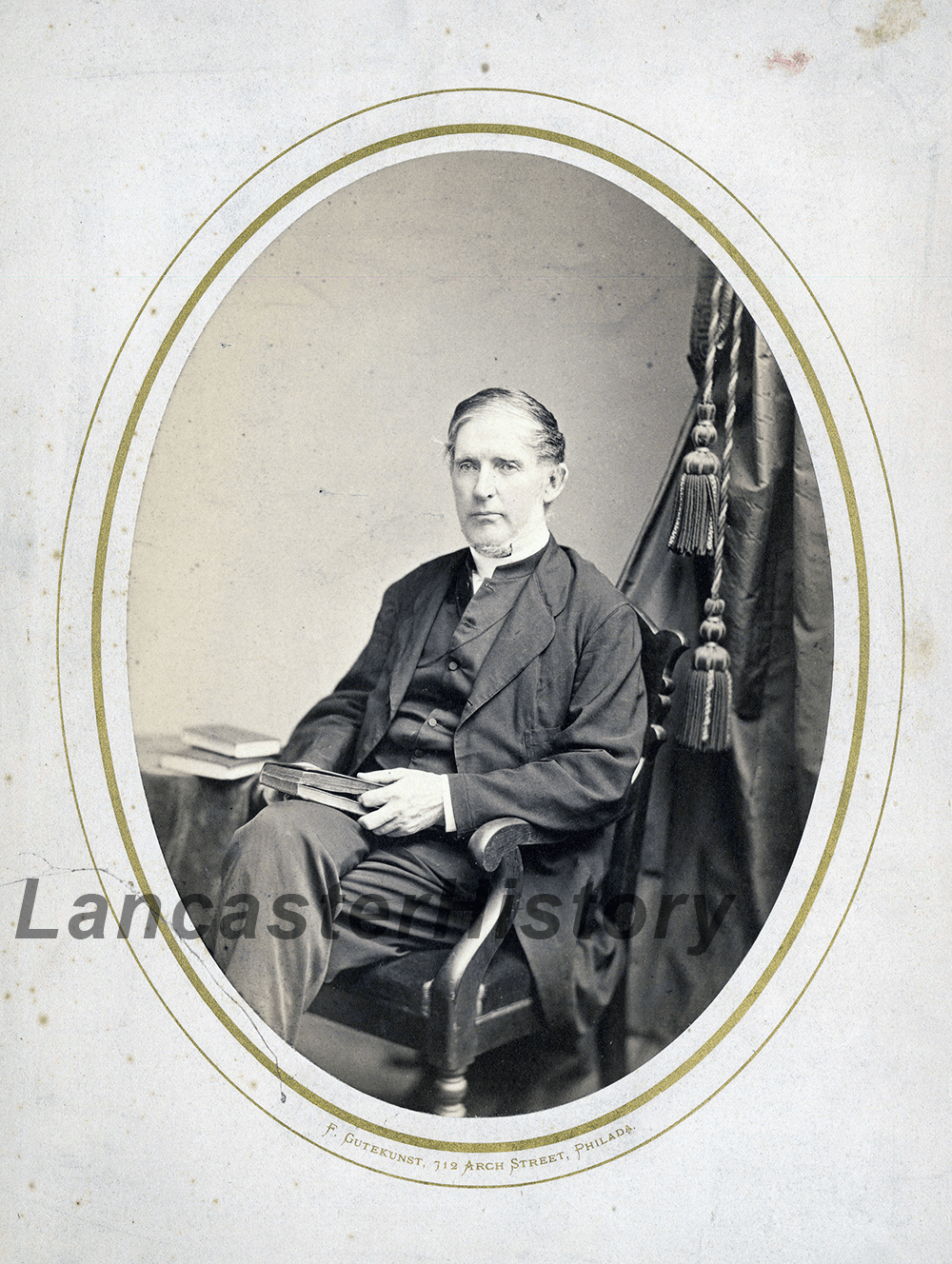
In late April 1849, James Buchanan moved to his new home at the Wheatland farm. That summer, his sister, Maria Yates came to visit him and it would be the last time they would see one another. Consumption had lingered in Maria since 1820, but on November 3, 1849 she died one month shy of her 54th birthday.
Jessie Magaw Weaver, like her mother, Maria also suffered from lingering consumption for many years. Jessie and Charles Weaver raised four children together, but on August 25, 1855, at the age of 31, Jessie died from consumption.
Consumption also impacted Reverend Edward Y. Buchanan’s family. Edward’s son, William died from the disease in the year 1875; he was 26 years old. The Reverend Edward Y. Buchanan would be James Buchanan’s only younger sibling who would not die from consumption. Edward outlived his older brother by 27 years, dying on January 20, 1895 at the age of 83.
Very few people infected by the disease of consumption survived its effects on their body. Scientists around the world began to research how to defeat the disease in the early 19th century. When Louis Pasteur’s modern germ theory became widely accepted in 1861, it took only four years for scientist Jean-Antoine Villemin to identify how tuberculosis was transmitted. By 1882 Robert Koch discovered what caused the virus to develop, but a cure evaded the scientific community. In 1907, the tuberculin skin test was developed by Clemens von Pirquet. Public health measures soon commenced to try and stop the spread of the bacteria through sanitoriums. However, it would not be until 1944 when science discovered streptomycin, which was the first effective treatment to control tuberculosis. By 1952 doctors began to employ isoniazid, the modern-day antibiotic used as a first-line treatment of active tuberculosis infection.[12]
The Buchanan family’s time in history coincided with the worst years of the tuberculosis epidemic. Like millions of others around the world their lives were disrupted and unfortunately devastated by this bacterial disease.
Sources Used or Consulted
[1] Klein, Philip S., President James Buchanan: A Biography, PSUP, State College, PA, 1962. P. 37.
[2] Moore, John B., ed., “The Works of James Buchanan,” Vol. XII, Biographical, Philadelphia & London: J. B. Lippincott Co., 1911, p. 291.
[3] Klein, Philip S., Bachelor Father — James Buchanan as a Familyman, https://Journals.PSU.EDU, P. 211.
[4] Moore, John B., ed., “The Works of James Buchanan,” Vol. II, 1830-1836, Philadelphia & London: J. B. Lippincott Co., 1908, p. 231.
[5] LancasterHistory, JBFP Part 1, Box 3, Series 1, Subseries 1, Letter 29 JB to HBH, Lancaster, 4 November 1837 (JB’s mistake on the year, Rev. Henry died on 1 Nov 1838).
[6] Klein, Philip S., President James Buchanan: A Biography, PSUP, State College, PA, 1962. P. 125.
[7] Ibid, PP. 125-126.
[8] Historical Society of PA., Cadwalader Papers, J. Buchanan to E.Y. Buchanan, 10 December 1838.
[9] LancasterHistory, JBFP Part 1, Box 3, Series 1, Subseries 1, Letter 31 JB to HBH, Lancaster, 26 October 1839.
[10] Moore, John B., ed., “The Works of James Buchanan,” Vol. 12, Biographical, Philadelphia & London: J. B. Lippincott Co., 1911, p. 323.
[11] LancasterHistory, James Buchanan Online Presidential Library, MSS1995_080_1844_JB_to_HL.
[12] The History of Tuberculosis, Daniel, Thomas M., Respiratory Medicine, Vol. 100, Issue 11, November 2006, Pages 1862-1870
From History From The House
